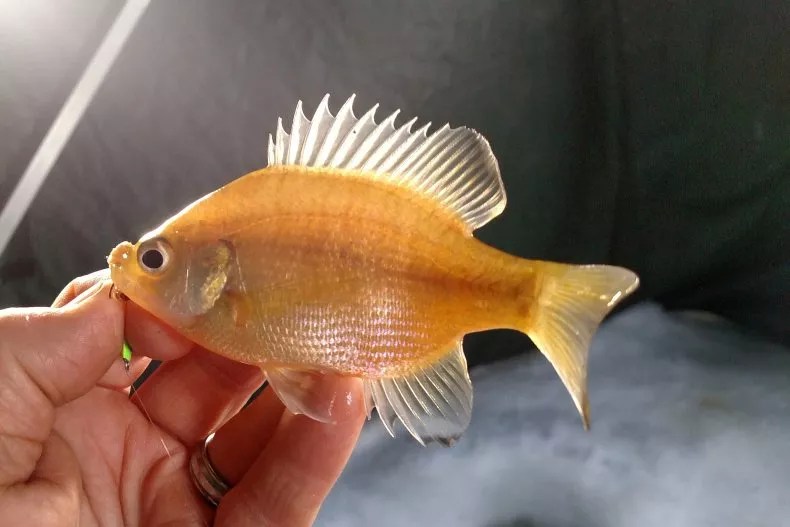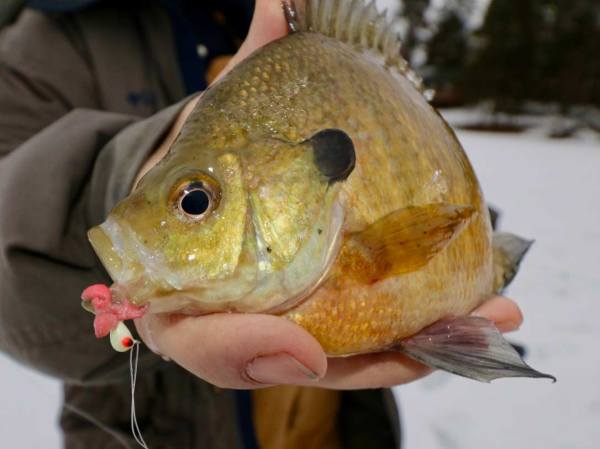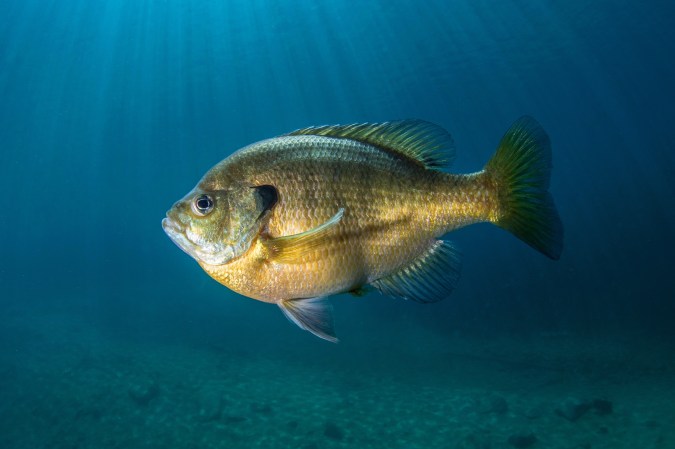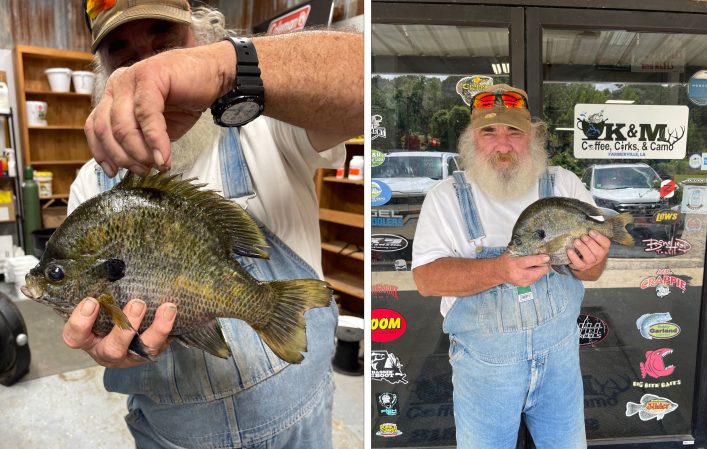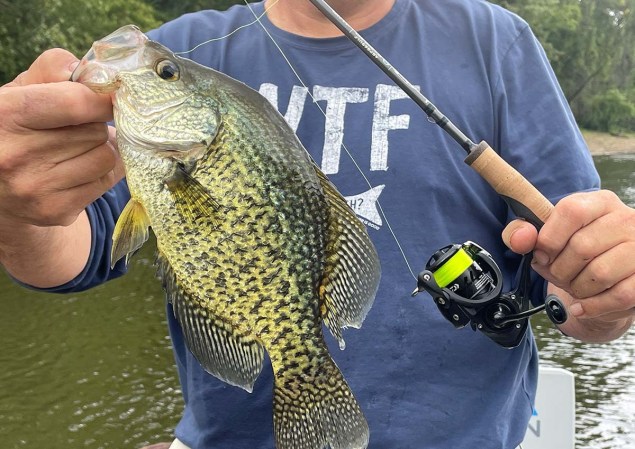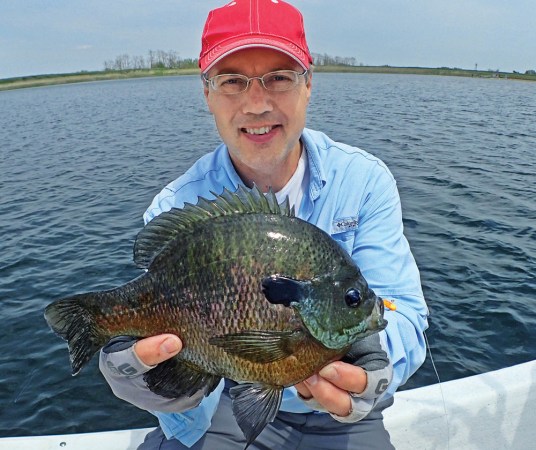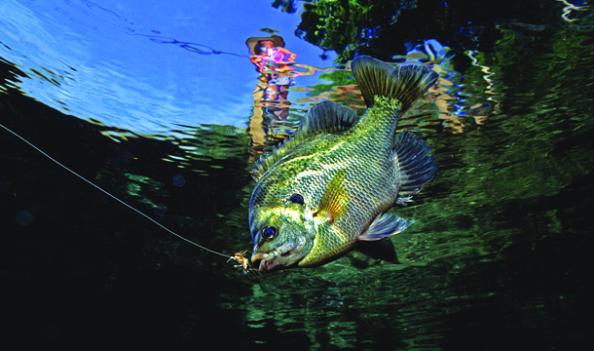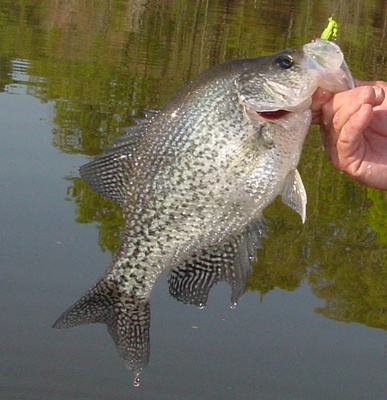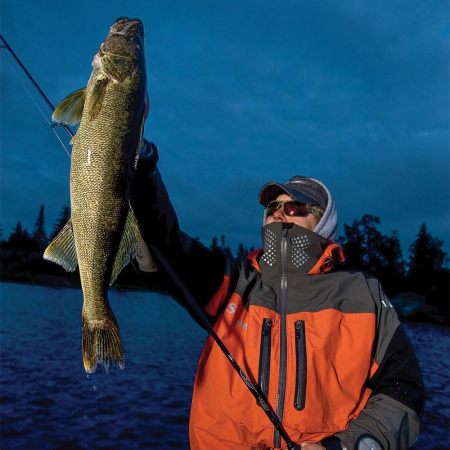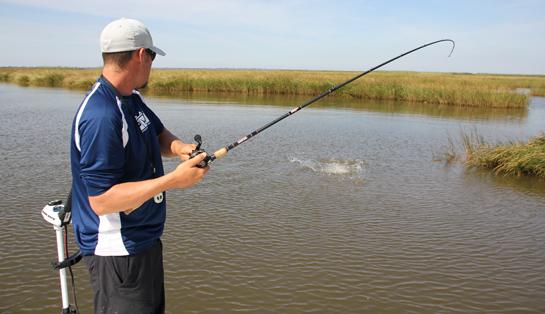Terry Nelson was ice fishing in late December on Lindstrom Lake, located just north of Minneapolis, when he caught a once-in-a-lifetime panfish.
“I thought, ‘What is this? I have never seen anything like this before,’” Nelson told Newsweek. “Then I figured it had to be a sunfish but [I’d] never seen one like this before and I have been fishing my whole life all over the place. This was a first for me.”
Nelson had pulled up a tiny panfish with shiny gold coloring. Nelson took a quick photo before releasing the fish back to Lindstrom Lake. Officials from Minnesota’s DNR later told Nelson that his gold catch was a rare gold-colored sunfish, probably a bluegill. The gold pigment of the fish is believed to be a mutation, making it look like it was glowing in the sun. Interestingly, the colloquial name for small, bluegill-like panfish is “sunfish,” which aptly fits the description of Nelson’s catch.
“It’s hard to be certain because normal coloration patterns help distinguish the species and sunfish species commonly hybridize—so even normally colored fish hybrids are hard to distinguish,” says Loren Miller, a Minnesota DNR fish geneticist.
Miller said the catch was surely a sunfish, and likely a bluegill. Sunfish have dozens of different sub-species. Nelson’s catch had none of the usual markings or coloration of a typical bluegill, which can appear in a wide variety of hues. Miller told Newsweek that was because of “xanthic mutation, or xanthochromism,” which is similar to albinism.
“Dark pigments are suppressed, leaving the yellows additionally enhanced,” says Miller. “This type of pigment mutation affects many fish species, as well as amphibians and reptiles. It appears to be a recessive mutation, meaning two ‘normal’ carrier parents mate and produce some double-recessive mutants.”
Remarkably, ice angler Rick Konakowitz caught a similarly colored “golden crappie” on Clear Lake, Minnesota in February. Clear Lake is located northwest of Minneapolis near St. Cloud.

